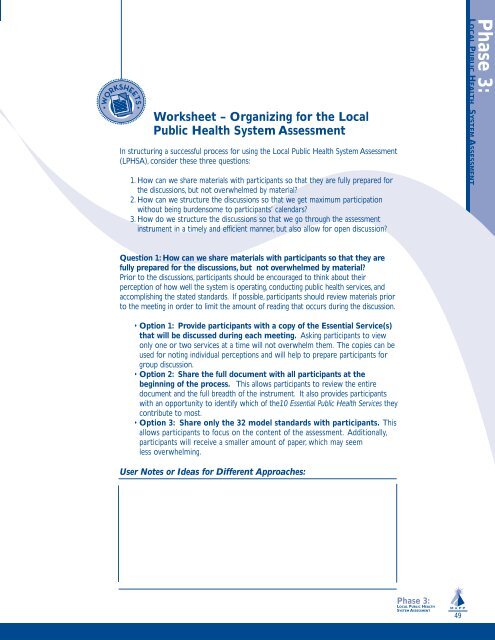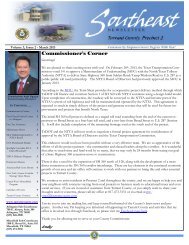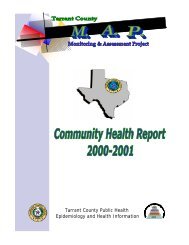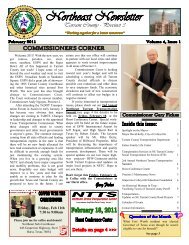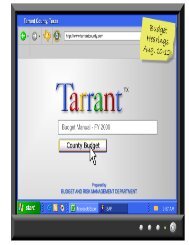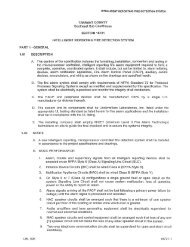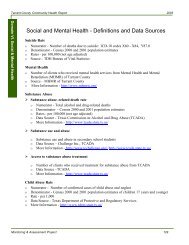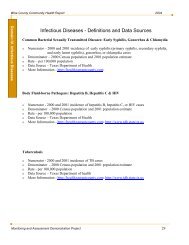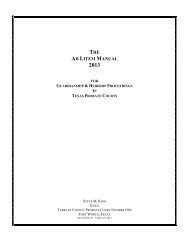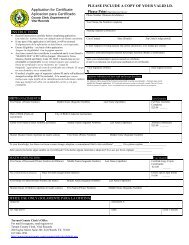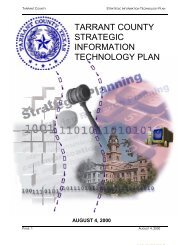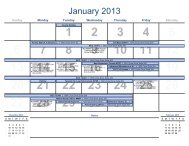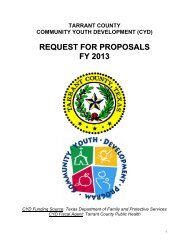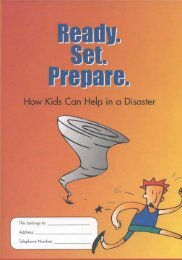MAPP Handbook - The National Association of County and City ...
MAPP Handbook - The National Association of County and City ...
MAPP Handbook - The National Association of County and City ...
Create successful ePaper yourself
Turn your PDF publications into a flip-book with our unique Google optimized e-Paper software.
Worksheet – Organizing for the Local<br />
Public Health System Assessment<br />
In structuring a successful process for using the Local Public Health System Assessment<br />
(LPHSA), consider these three questions:<br />
1. How can we share materials with participants so that they are fully prepared for<br />
the discussions, but not overwhelmed by material?<br />
2. How can we structure the discussions so that we get maximum participation<br />
without being burdensome to participants’ calendars?<br />
3. How do we structure the discussions so that we go through the assessment<br />
instrument in a timely <strong>and</strong> efficient manner, but also allow for open discussion?<br />
Phase 3:<br />
LOCAL PUBLIC HEALTH SYSTEM ASSESSMENT<br />
Question 1: How can we share materials with participants so that they are<br />
fully prepared for the discussions, but not overwhelmed by material?<br />
Prior to the discussions, participants should be encouraged to think about their<br />
perception <strong>of</strong> how well the system is operating, conducting public health services, <strong>and</strong><br />
accomplishing the stated st<strong>and</strong>ards. If possible, participants should review materials prior<br />
to the meeting in order to limit the amount <strong>of</strong> reading that occurs during the discussion.<br />
• Option 1: Provide participants with a copy <strong>of</strong> the Essential Service(s)<br />
that will be discussed during each meeting. Asking participants to view<br />
only one or two services at a time will not overwhelm them. <strong>The</strong> copies can be<br />
used for noting individual perceptions <strong>and</strong> will help to prepare participants for<br />
group discussion.<br />
• Option 2: Share the full document with all participants at the<br />
beginning <strong>of</strong> the process. This allows participants to review the entire<br />
document <strong>and</strong> the full breadth <strong>of</strong> the instrument. It also provides participants<br />
with an opportunity to identify which <strong>of</strong> the10 Essential Public Health Services they<br />
contribute to most.<br />
• Option 3: Share only the 32 model st<strong>and</strong>ards with participants. This<br />
allows participants to focus on the content <strong>of</strong> the assessment. Additionally,<br />
participants will receive a smaller amount <strong>of</strong> paper, which may seem<br />
less overwhelming.<br />
User Notes or Ideas for Different Approaches:<br />
Phase 3:<br />
LOCAL PUBLIC HEALTH<br />
SYSTEM ASSESSMENT<br />
49


